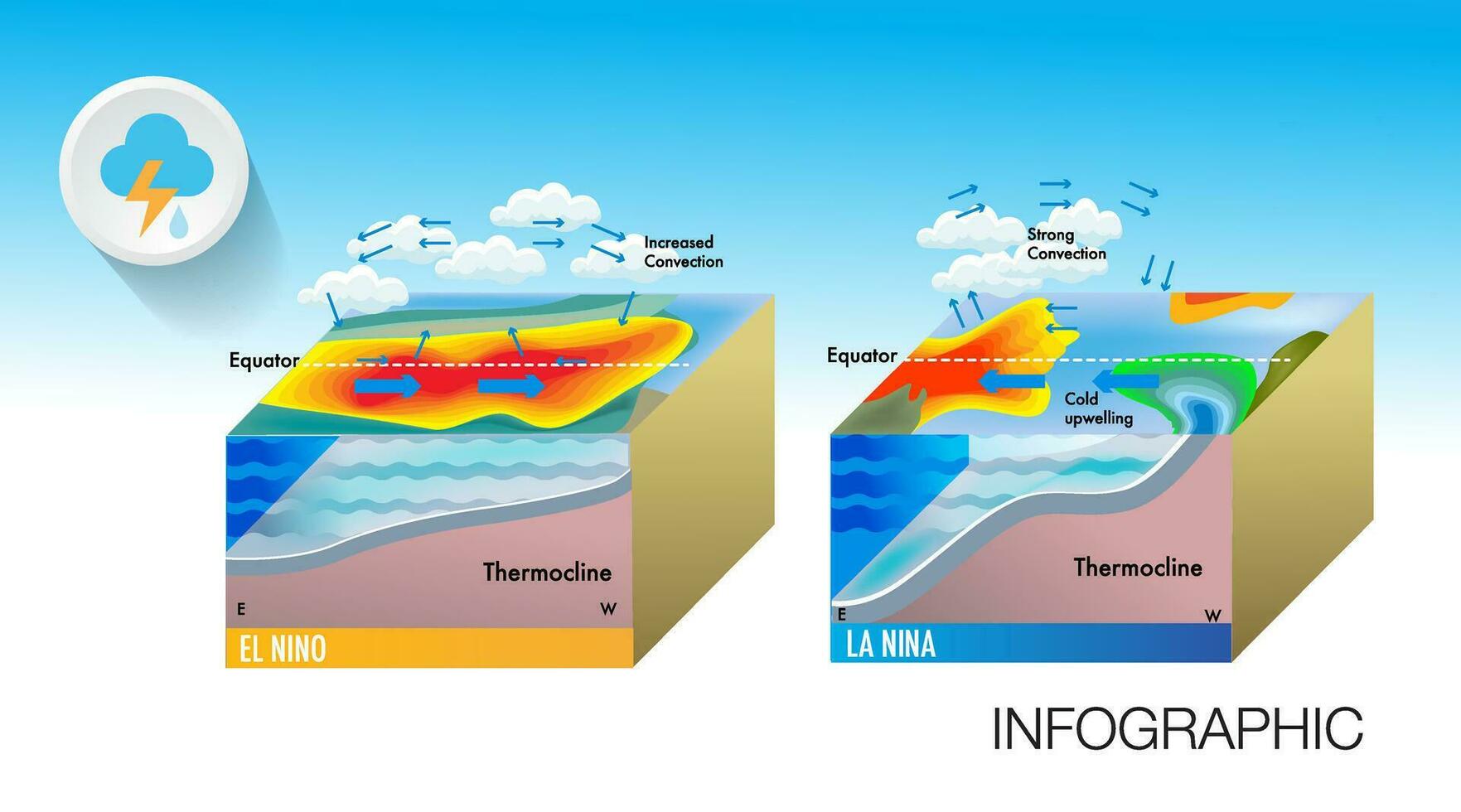1. Introduction
As our world grapples with increasingly unpredictable weather patterns, the terms El Niño and La Niña have entered everyday conversations, often accompanied by a sense of confusion and concern. These phenomena, driven by the complex dance of oceanic and atmospheric conditions, play a significant role in shaping extreme weather events across the globe. Coupled with the long-term impacts of global warming and climate change, understanding this interplay becomes crucial for comprehending the challenges we face today. In this blog post, we will delve into the science behind El Niño and La Niña, exploring how these natural cycles influence weather extremes, and examine their relationship with the broader context of climate change. Join us as we uncover the intricate connections between these powerful forces of nature and what they mean for our planet’s future.
2. What are El Niño and La Niña?

El Niño and La Niña are two crucial climate phenomena that play a significant role in influencing weather patterns around the globe, particularly in the Pacific Ocean. Both are part of a larger climate system known as the El Niño-Southern Oscillation (ENSO), which oscillates between these two opposing phases, each with its distinct characteristics and impacts.
El Niño refers to the periodic warming of sea surface temperatures in the central and eastern Pacific Ocean. Typically occurring every two to seven years, this phenomenon can lead to a cascade of weather events. During an El Niño, the warmer ocean waters can disrupt typical weather patterns, often resulting in increased rainfall in some regions, such as the southern United States and parts of South America, while causing droughts in others, including Australia and Indonesia. The effects of El Niño can be vast, contributing to altered storm tracks, flooding, and even influencing hurricane activity in the Atlantic.
On the other hand, La Niña is characterized by the cooling of sea surface temperatures in the same regions of the Pacific Ocean. This phase often follows an El Niño and can last for several months to a few years. La Niña typically brings about opposite effects to those of El Niño; for instance, it can lead to increased rainfall in regions like Australia and Southeast Asia, while promoting drier conditions in the southern United States. The presence of La Niña can enhance the Atlantic hurricane season and may also contribute to more severe winter weather in parts of the northern United States.
3. Impact of El Niño and La Niña on Extreme Weather Events
El Niño and La Niña are two significant climate phenomena that play pivotal roles in shaping weather patterns around the globe, often leading to extreme weather events. El Niño, characterized by the warming of ocean surface temperatures in the central and eastern Pacific, tends to disrupt normal weather patterns, resulting in an array of impacts. During an El Niño event, regions such as the southwestern United States may experience increased rainfall, leading to heightened risks of flooding and landslides. Conversely, areas like Southeast Asia and Australia often face drought conditions, which can devastate agriculture and water supplies.
On the other hand, La Niña, marked by cooler ocean surface temperatures in the same Pacific region, tends to have contrasting effects. This phenomenon often brings about wetter conditions in Southeast Asia and northern Australia, while the southern United States may experience dry spells. The interplay between these two systems can exacerbate existing weather-related challenges, sometimes leading to severe storms, hurricanes, or prolonged droughts depending on the region and season.
Moreover, the broader context of global warming and climate change adds complexity to the effects of El Niño and La Niña. As the planet warms, the intensity and frequency of these phenomena may increase, potentially leading to more severe and unpredictable weather events. Understanding the intricate relationship between these climatic factors is essential for improving forecasting models and preparing for the extreme weather that can arise as a result. By studying past patterns and current data, meteorologists and climate scientists can better predict how El Niño and La Niña may influence extreme weather events, allowing communities to brace for the impacts and adapt accordingly.
4. The Role of Global Warming in Weather Patterns
Global warming plays a pivotal role in reshaping weather patterns across the globe, influencing both the frequency and intensity of extreme weather events. As the Earth’s average temperature continues to rise, primarily due to the accumulation of greenhouse gases in the atmosphere, the dynamics of weather systems are significantly altered. Warmer air holds more moisture, which can lead to heavier rainfall and increased flooding in some regions while simultaneously contributing to prolonged droughts in others.
In addition, global warming has been linked to an increase in the severity and number of hurricanes and tropical storms. The warmer ocean waters serve as fuel for these storms, intensifying their winds and rainfall and causing more devastation when they make landfall. This change in ocean temperatures also affects the behavior of El Niño and La Niña, two climatic phenomena that already have profound impacts on global weather.
Furthermore, as ice caps and glaciers melt at an alarming rate, this not only contributes to rising sea levels but also disrupts established weather patterns. The loss of reflective ice surfaces means that more sunlight is absorbed by the Earth, leading to further warming and creating a vicious cycle of changing climates.
